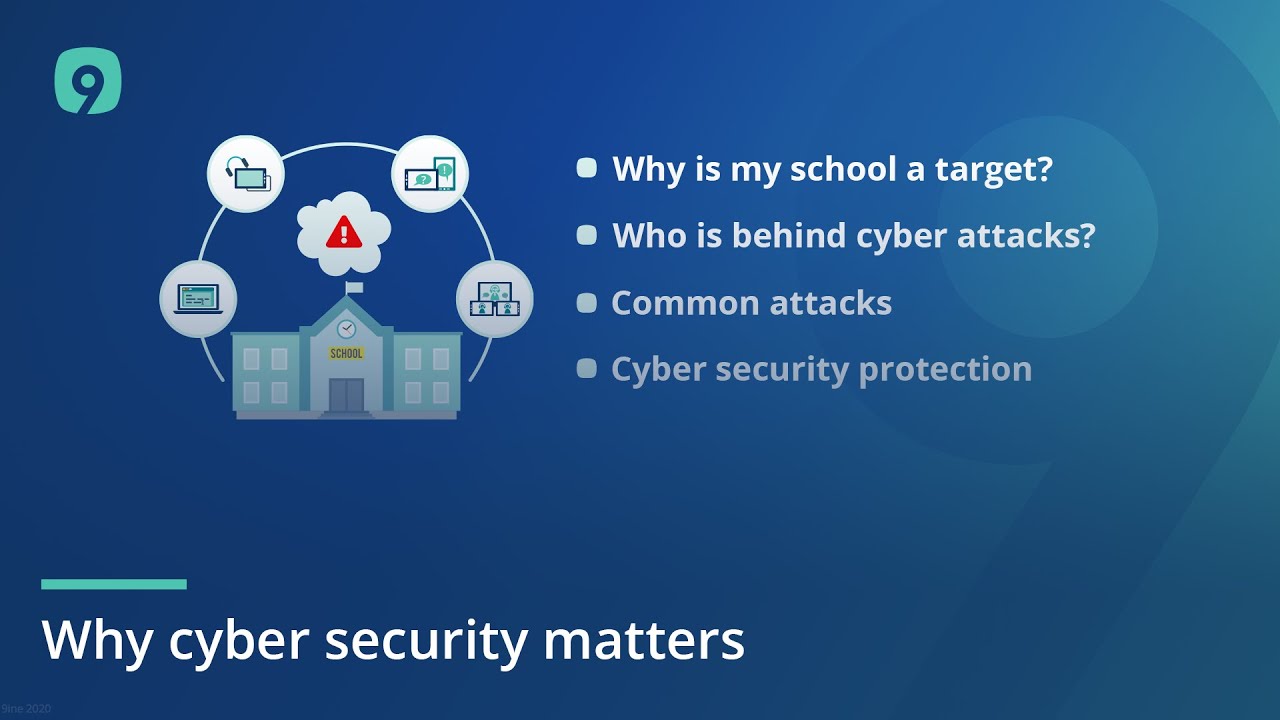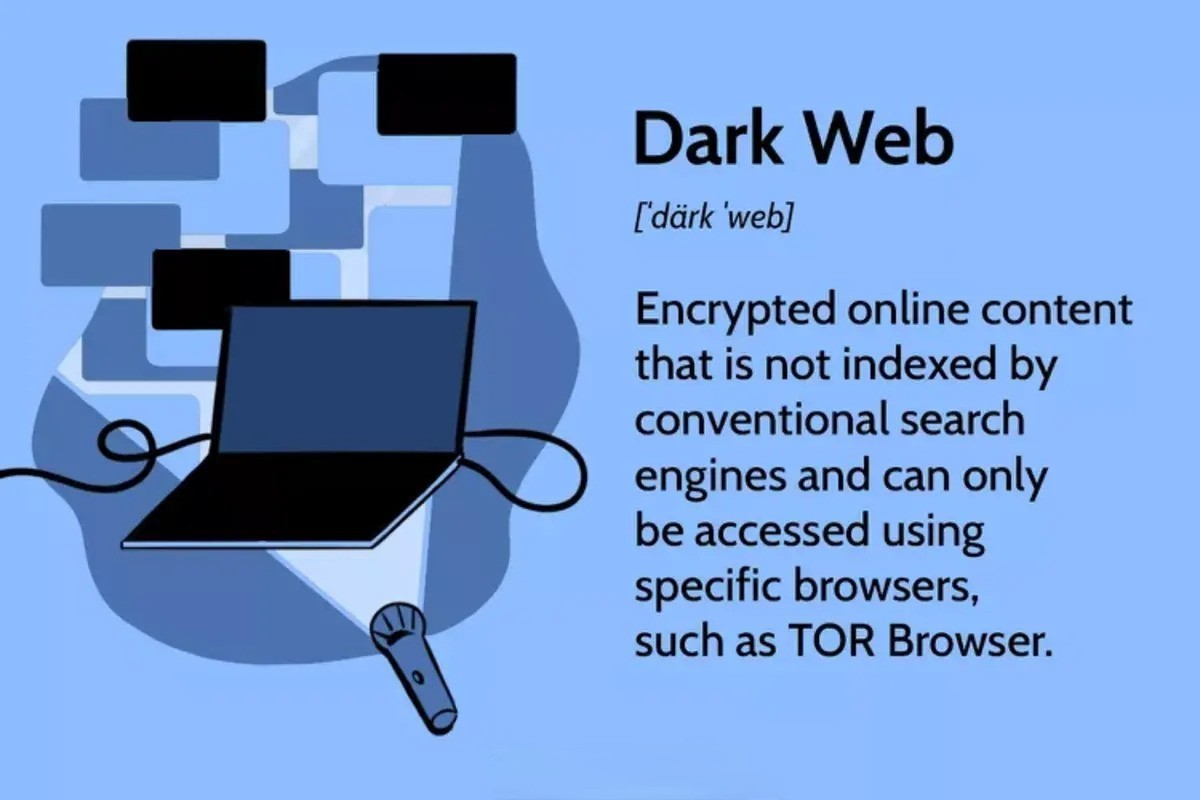Introduction
The evolution of technology has brought about the interconnected world of cyberspace, where information is exchanged and shared at an unprecedented rate. This vast virtual realm is composed of multiple layers, each playing a critical role in facilitating seamless communication and data transfer. However, the presence of these layers also presents challenges and complexities for cybersecurity policy decisions.
Understanding the various layers of cyberspace is essential for policymakers and security professionals to design effective strategies to protect sensitive information and combat cyber threats. Each layer contributes to different aspects of data transmission and requires unique security considerations.
In this article, we will explore the different layers of cyberspace and examine how they impact cybersecurity policy decisions. We will delve into the policy implications at each layer and highlight the measures that should be taken to ensure a safe and secure digital environment.
By examining the layers of cyberspace and their corresponding security concerns, policymakers can gain valuable insights to create comprehensive cybersecurity frameworks that address the specific vulnerabilities and risks associated with each layer.
Note: The term “cyberspace” is broadly used in this article to refer to the virtual environment in which electronic communication and data transfer take place. It encompasses various interconnected networks, including the internet, private networks, and other communication mediums.
Overview of the Layers of Cyberspace
Cyberspace is comprised of multiple layers, each serving a specific purpose to facilitate communication and data exchange. Understanding these layers provides valuable insights into the complexities of the digital realm and its impact on cybersecurity policy decisions. Let’s explore each layer in detail:
- Physical Layer: This layer comprises the physical infrastructure that enables the transmission of data through various mediums, such as cables, fiber optics, satellites, and wireless connections. It encompasses the hardware components necessary for communication, including routers, switches, and network interfaces.
- Data Link Layer: The data link layer ensures the reliable and error-free transfer of data between adjacent nodes within a network. It handles tasks such as framing, error detection, and flow control. Ethernet and Wi-Fi are common protocols used in this layer.
- Network Layer: The network layer handles the routing of data across different networks. It establishes logical paths for data transmission, determines the best route, and manages IP addressing. Popular network layer protocols include Internet Protocol (IP) and Internet Control Message Protocol (ICMP).
- Transport Layer: The transport layer is responsible for the end-to-end delivery of data between devices. It ensures reliable, ordered, and error-free data transmission. The Transmission Control Protocol (TCP) and User Datagram Protocol (UDP) are commonly used in this layer.
- Session Layer: The session layer establishes, manages, and terminates sessions or connections between applications. It provides the necessary mechanisms for session synchronization, checkpointing, and recovery. This layer helps ensure data integrity and confidentiality during communication.
- Presentation Layer: The presentation layer focuses on the syntax and semantics of data exchanged between applications. It handles data encryption, compression, and formatting, ensuring compatibility between different systems. This layer translates data into a format that applications can understand and process.
- Application Layer: The application layer is the topmost layer of the networking stack. It encompasses the applications and services that users interact with directly, such as web browsers, email clients, and file transfer protocols. This layer enables user-friendly and secure access to network resources.
These layers work together to ensure the smooth and secure transmission of data in the digital realm. Each layer has its own set of protocols, standards, and security considerations that must be taken into account when designing cybersecurity policies.
Physical Layer
The physical layer of cyberspace refers to the foundational infrastructure that enables the transmission of data through various physical mediums. It encompasses the physical components, such as cables, fiber optics, satellites, and wireless connections, that facilitate the transfer of information. This layer plays a crucial role in shaping cybersecurity policy decisions as it sets the groundwork for secure data transmission and network resilience.
One of the key policy implications at the physical layer is the protection of physical infrastructure. It is essential to safeguard the physical components that support communication networks, including data centers, telecommunications facilities, and network endpoints. Implementing access controls, surveillance systems, and robust physical security measures helps defend against physical intrusions and tampering.
Additionally, policy decisions should address the resilience and redundancy of physical infrastructure. Redundancy measures, such as backup power supplies and multiple network routes, can minimize the impact of physical failures or natural disasters. Designing policies that encourage the development of diverse and resilient physical infrastructure helps ensure continuous and reliable communication.
Negotiating secure physical connections is also a key consideration at the physical layer. Policies can dictate the use of encryption protocols and secure authentication mechanisms for establishing physical links between devices and networks. This helps prevent unauthorized access and interception of data in transit.
Moreover, policy decisions should focus on addressing the emerging challenges posed by wireless communications. With the proliferation of mobile devices and wireless technologies, securing wireless networks becomes paramount. Policies may include regulations and standards for wireless encryption, access control, and the management of wireless spectrum to mitigate potential vulnerabilities.
Implementing policies that promote awareness and adherence to best practices in physical security is crucial. Training programs that educate users and network administrators about physical security risks, such as social engineering and physical tampering, can help mitigate threats at the physical layer.
Overall, the physical layer sets the foundation for secure data transmission and network integrity. Policymakers must consider the protection of physical infrastructure, the resilience of network components, the establishment of secure physical connections, and the mitigation of wireless security risks when formulating cybersecurity policies.
Data Link Layer
The data link layer is a critical component of the cyberspace infrastructure, responsible for the reliable and error-free transfer of data between adjacent nodes within a network. This layer plays a crucial role in ensuring data integrity and enhancing the overall security of the communication process. Understanding the policy implications at the data link layer is essential for cybersecurity decision-makers to effectively protect against threats and vulnerabilities.
One of the key considerations at the data link layer is the implementation of robust authentication mechanisms. Policy decisions can enforce the use of protocols such as MAC (Media Access Control) address filtering and IEEE 802.1X authentication to prevent unauthorized access to the network. By verifying the identity of devices connecting to the network, policies can significantly reduce the risk of malicious actors gaining unauthorized access to sensitive information.
Another policy implication at the data link layer is the management of data transmission errors. Error detection and correction mechanisms, such as Cyclic Redundancy Check (CRC) or Forward Error Correction (FEC) techniques, can be implemented to ensure the integrity of data during transmission. Policies can mandate the use of these techniques and establish thresholds to determine acceptable error rates, ensuring robust data link layer security.
Additionally, policy decisions should address the prevention and mitigation of data link layer attacks. For example, policies can enforce the usage of secure protocols, such as Secure Sockets Layer (SSL) or Transport Layer Security (TLS), to protect against eavesdropping and spoofing attacks. Regular audits and vulnerability assessments can also be mandated to identify and address potential weaknesses in data link layer security.
Another important policy consideration is the management of network congestion and bandwidth allocation at the data link layer. Policies can prioritize network traffic to ensure critical data flows smoothly while managing the allocation of network resources. This can help prevent network bottlenecks and improve overall performance.
Policies should also address the security of wireless data link layer protocols, particularly in Wi-Fi networks. Encryption protocols like WPA2 or WPA3 can be mandated to protect wireless communications from unauthorized access and eavesdropping.
By formulating policies that address authentication mechanisms, data transmission errors, attacks, congestion management, and wireless security, decision-makers can strengthen the overall security posture at the data link layer of cyberspace infrastructure.
Network Layer
The network layer is a crucial component of cyberspace infrastructure that handles the routing of data across different networks. It establishes logical paths for data transmission, determines the best route for data packets, and manages IP addressing. Understanding the policy implications at the network layer is essential for shaping effective cybersecurity strategies and safeguarding the integrity and confidentiality of data.
One of the key policy considerations at the network layer is the implementation of robust routing protocols. Policies can dictate the use of secure and efficient routing algorithms, such as Open Shortest Path First (OSPF) or Border Gateway Protocol (BGP), to ensure optimal data flow and prevent unauthorized route manipulation or hijacking.
Addressing the management of IP addressing is another important policy implication at the network layer. Policies can regulate the allocation and assignment of IP addresses, ensuring that they are obtained from trusted authorities and preventing address spoofing. Implementing IP address management (IPAM) systems can enhance network visibility and facilitate the identification of malicious activities or unauthorized devices.
Policy decisions should also address the prevention and mitigation of network layer attacks, such as Distributed Denial of Service (DDoS) attacks. The implementation of traffic filtering mechanisms, like Access Control Lists (ACLs), can help identify and block malicious traffic, increasing the resiliency of network infrastructure.
Another policy consideration at the network layer is the management of network segmentation and virtual private networks (VPNs). Policies can promote the use of secure network segmentation techniques to isolate sensitive data and restrict access to specific resources. Encouraging the use of VPNs can also enhance data confidentiality and protect network communications, particularly for remote workers or branch office connectivity.
Securing network layer protocols, such as Internet Protocol (IP), is of paramount importance. Policies can mandate the use of IPsec (Internet Protocol Security) to provide encryption and authentication for IP communications, ensuring confidentiality and integrity of transmitted data.
Finally, policies should address the deployment and management of intrusion detection and prevention systems (IDS/IPS) at the network layer. These systems can monitor network traffic for suspicious activities, detect and block potential threats in real-time, and enhance the overall security posture of the network.
By formulating policies that address routing protocols, IP addressing, network layer attacks, network segmentation, protocol security, and intrusion detection and prevention, decision-makers can strengthen the security of the network layer in cyberspace infrastructure.
Transport Layer
The transport layer is a vital component of cyberspace infrastructure responsible for the end-to-end delivery of data between devices. It ensures reliable, ordered, and error-free transmission of data, playing a crucial role in maintaining the integrity and security of transmitted information. Understanding the policy implications at the transport layer is essential for effective cybersecurity decision-making.
One of the key policy considerations at the transport layer is the selection and implementation of appropriate transport protocols. The two commonly used transport protocols are the Transmission Control Protocol (TCP) and User Datagram Protocol (UDP). Policies can dictate the usage of secure versions of these protocols, such as TCP/IP with Secure Sockets Layer (SSL/TLS), to ensure data confidentiality, integrity, and authentication during transmission.
Another important policy implication at the transport layer is the management of congestion control. Policies can dictate the use of congestion control mechanisms, such as TCP congestion control algorithms, to prevent network congestion, improve network performance, and deter denial-of-service attacks.
Policy decisions should also focus on the prevention and mitigation of transport layer attacks, such as SYN flood attacks or session hijacking. Implementing measures like firewall rules, intrusion detection systems, and implementing secure session establishment protocols, such as Transport Layer Security (TLS), can help protect against these attacks.
End-to-end encryption is another crucial consideration at the transport layer. Policies can promote the use of encryption protocols, such as SSL/TLS or IPsec, to ensure the confidentiality and integrity of data in transit. Encouraging the use of strong encryption algorithms and authentication mechanisms can significantly enhance transport layer security.
The management of transport layer ports is also an important policy implication. Policies can control the use of specific ports to restrict the types of services that can communicate through the network. By managing transport layer ports, organizations can reduce the attack surface and prevent unauthorized access.
Ensuring the reliability and availability of transport layer services is also essential. By implementing policies that promote redundancy and failover mechanisms, organizations can minimize disruption and ensure uninterrupted data transmission.
By formulating policies that address transport protocol selection, congestion control, attack prevention, end-to-end encryption, port management, and service reliability, decision-makers can effectively protect the transport layer and enhance cybersecurity at this critical stage of data transmission.
Session Layer
The session layer is a crucial component of cyberspace infrastructure, responsible for establishing, managing, and terminating sessions or connections between applications. It provides the necessary mechanisms for session synchronization, checkpointing, and recovery, ensuring the integrity and confidentiality of data during communication. Understanding the policy implications at the session layer is essential for effective cybersecurity decision-making.
One of the key policy considerations at the session layer is the establishment of secure session protocols. Policies can mandate the use of secure communication protocols, such as Transport Layer Security (TLS), to ensure the encryption and authentication of session data. These protocols protect against eavesdropping, tampering, and unauthorized access to the session.
Another important policy implication at the session layer is the management of session timeouts and session termination processes. Policies can dictate the maximum duration for a session to remain active and enforce the automatic termination of idle sessions. Such policies prevent unauthorized access to sessions and minimize the risk of data leakage or hijacking.
Policy decisions should also address the authentication and authorization mechanisms at the session layer. Implementing strong authentication protocols, such as multi-factor authentication, can ensure that only authorized users can establish and maintain sessions. Access control policies can also regulate users’ privileges and permissions within a session, limiting their actions and protecting sensitive data.
Ensuring session integrity is another key consideration at the session layer. Policies can mandate the use of session integrity checks, such as message digests or digital signatures, to verify the integrity of session data. This prevents tampering or unauthorized modification of session information during transmission.
Addressing session management in distributed systems is also crucial. Policies can dictate the use of secure session management protocols, such as Secure Remote Procedure Call (RPC) mechanisms, to authenticate and manage sessions in distributed environments. This helps prevent session hijacking or unauthorized access to distributed resources.
Policies should also address the logging and auditing of session activities. Implementing policies that require the logging of session activities and the analysis of session logs can help detect and investigate any suspicious or malicious activities. This enhances the accountability and traceability of session actions.
By formulating policies that address secure session protocols, session timeouts and termination, authentication and authorization, session integrity, distributed session management, and session logging and auditing, decision-makers can effectively safeguard the session layer and enhance cybersecurity in cyberspace infrastructure.
Presentation Layer
The presentation layer is a crucial component of cyberspace infrastructure that focuses on the syntax and semantics of data exchanged between applications. It is responsible for data encryption, compression, and formatting, ensuring compatibility between different systems. Understanding the policy implications at the presentation layer is essential for effective cybersecurity decision-making.
One of the key policy considerations at the presentation layer is the implementation of data encryption and decryption mechanisms. Policies can mandate the use of encryption protocols, such as Secure Sockets Layer (SSL) or Transport Layer Security (TLS), to protect sensitive data during transmission. Encryption ensures that data remains confidential and secure, even if intercepted by unauthorized entities.
Another important policy implication at the presentation layer is the management of data compression techniques. Policies can encourage the use of efficient compression algorithms to reduce file sizes and optimize bandwidth usage. However, care should be taken to ensure that compressed files are not vulnerable to compression-based attacks, such as the “Zip Slip” vulnerability.
Ensuring data format compatibility is another critical consideration. Policies can promote adherence to standard data formats, such as JSON or XML, to ensure interoperability between different systems. This simplifies data exchange processes and reduces the risk of data loss or corruption due to incompatible formats.
Policy decisions should also address the prevention and mitigation of presentation layer attacks, such as code injection attacks or cross-site scripting (XSS) vulnerabilities. Educating developers and users about secure coding practices, input validation techniques, and security testing methodologies can help mitigate these risks and enhance the security of the presentation layer.
Additionally, policies can address the management of metadata and digital signatures at the presentation layer. Metadata management policies can regulate the handling of metadata to prevent unintentional data leakage or the exploitation of sensitive information. Digital signature policies can promote the use of cryptographic techniques to verify the authenticity and integrity of data during transmission.
Moreover, policies should consider the accessibility of data at the presentation layer. Organizations should adopt accessibility standards to ensure that individuals with disabilities can effectively access and use digital content. This promotes inclusivity and ensures that cybersecurity policies do not inadvertently hinder accessibility.
By formulating policies that address data encryption, compression, format compatibility, attack prevention, metadata management, digital signatures, and accessibility, decision-makers can effectively protect the presentation layer and enhance cybersecurity in cyberspace infrastructure.
Application Layer
The application layer is the topmost layer of the networking stack and plays a critical role in the interaction between users and network resources. It encompasses the applications and services that users directly interact with, such as web browsers, email clients, and file transfer protocols. Understanding the policy implications at the application layer is crucial for effective cybersecurity decision-making.
One of the key policy considerations at the application layer is the implementation of secure authentication mechanisms. Policies can mandate the use of strong authentication protocols, such as multi-factor authentication or biometric authentication, to verify the identity of users accessing applications. This helps prevent unauthorized access and protects sensitive data.
Another important policy implication at the application layer is the management of access controls. Policies should define the granular access control privileges for users, ensuring that they have appropriate permissions to access specific resources or perform certain actions within an application. This prevents unauthorized activities and reduces the risk of data breaches.
Policy decisions should also address secure coding practices and vulnerability management at the application layer. Policies can promote secure software development practices, such as input validation, output encoding, and secure session management, to mitigate common application layer vulnerabilities like cross-site scripting (XSS) and SQL injection. Regular vulnerability assessments and patch management processes should also be mandated to address any identified vulnerabilities.
Protecting data in transit and at rest is another critical consideration at the application layer. Policies can mandate the use of secure communication protocols, such as HTTPS or SFTP, to encrypt data during transmission. Additionally, policies can require the use of encryption mechanisms, such as file encryption or database encryption, to protect sensitive data when at rest.
Furthermore, policies should address the handling of user data privacy and compliance with relevant regulations, such as the General Data Protection Regulation (GDPR) or the California Consumer Privacy Act (CCPA). Organizations should establish policies that govern the collection, storage, and processing of user data, ensuring transparency and user consent.
End-user education and awareness are also important policy considerations at the application layer. Policies can promote user training programs to educate individuals about safe browsing habits, avoiding phishing attacks, and recognizing social engineering attempts. By empowering users with knowledge, organizations can minimize human-induced vulnerabilities and strengthen overall cybersecurity.
By formulating policies that address secure authentication, access controls, secure coding practices, vulnerability management, data privacy, user awareness, and encryption, decision-makers can effectively protect the application layer and enhance cybersecurity in cyberspace infrastructure.
Impact on Cybersecurity Policy Decisions
The various layers of cyberspace have a significant impact on the formulation of cybersecurity policy decisions. Understanding the implications of each layer is crucial for developing comprehensive strategies to address the unique challenges and vulnerabilities presented at each stage of data transmission and communication.
Policymakers must consider the interdependencies between different layers and how security measures implemented at one layer can have ripple effects on other layers. For example, a policy decision to enforce strong authentication mechanisms at the application layer will impact the overall security posture of the session and transport layers as well.
Additionally, the diversity of technologies and protocols within each layer necessitates tailored policy approaches. Policymakers must take into account the specific security considerations and best practices associated with each layer. This includes encryption at the presentation layer, secure routing at the network layer, or access control at the application layer.
Cybersecurity policy decisions must also address the dynamic nature of cyberspace, with emerging technologies and threats constantly evolving. Policies need to be flexible and adaptable to keep pace with advancements in technology and the emergence of new cyber threats. Regular reviews and updates of policies will be necessary to ensure their continued effectiveness.
The impact of cybersecurity policy decisions also extends beyond the technical aspects of cyberspace. Policies should encompass legal and regulatory frameworks that govern data protection, privacy, and the responsibilities of organizations and individuals in maintaining a secure digital environment. Policymakers must collaborate with legal experts and regulatory bodies to align cybersecurity policies with legal requirements and international standards.
Furthermore, the effectiveness of cybersecurity policies relies on fostering a culture of cybersecurity awareness and education. Policies should encourage organizations and individuals to prioritize cybersecurity, promoting best practices, training programs, and regular security assessments. Cybersecurity policy decisions should emphasize the importance of collaboration and information sharing among stakeholders to collectively address cyber threats.
Ultimately, the impact of cybersecurity policy decisions is far-reaching, influencing the security posture of cyberspace infrastructure and shaping the behavior of organizations and individuals in adopting secure practices. By considering the unique challenges and vulnerabilities at each layer, adapting to evolving technologies and threats, and promoting a culture of cybersecurity, policymakers can formulate effective policies to safeguard the digital realm.
Policy Implications at the Physical Layer
The physical layer of cyberspace infrastructure presents unique policy implications that are critical for ensuring the security and resilience of digital networks. Policymakers must address specific challenges and vulnerabilities at this layer to protect the physical infrastructure that supports communication and data transmission.
One of the key policy considerations at the physical layer is the protection of physical infrastructure. Policies should mandate the implementation of robust physical security measures, such as access controls, surveillance systems, and perimeter defenses, to safeguard data centers, telecommunications facilities, and network endpoints. Regular audits and assessments can help identify potential vulnerabilities and ensure compliance with security standards.
Additionally, policies can address the resilience and redundancy of physical infrastructure. Organizations should establish policies that promote the development and maintenance of diverse communication mediums, multiple network routes, and backup power supplies. Redundancy measures enhance the reliability of networks and mitigate the impact of physical failures or natural disasters.
Negotiating secure physical connections is another important consideration. Policies can require the usage of encryption protocols and secure authentication mechanisms for establishing physical links between devices and networks. This prevents unauthorized access and interception of data in transit, providing an additional layer of security at the physical layer.
Policy decisions should also address the emerging challenges posed by wireless communications. With the increasing reliance on wireless networks, policies can regulate the use of secure wireless protocols, such as Wi-Fi Protected Access (WPA2) or WPA3, to protect against unauthorized access and eavesdropping. Regular vulnerability assessments can help identify and mitigate wireless security risks.
Moreover, policy implications at the physical layer include the promotion of awareness and adherence to best practices in physical security. Policies should enforce training programs that educate users and network administrators about physical security risks, such as social engineering and physical tampering. This helps ensure that individuals are equipped with the necessary knowledge to detect and prevent physical security breaches.
By formulating policies that address physical infrastructure protection, resilience and redundancy, secure physical connections, wireless security, and physical security best practices, decision-makers can effectively strengthen the security of the cyberspace infrastructure at the physical layer.
Policy Implications at the Data Link Layer
The data link layer of cyberspace infrastructure presents unique policy implications that are crucial for ensuring secure and reliable data transmission between adjacent nodes within a network. Policymakers must address specific challenges and vulnerabilities at this layer to enhance the security and integrity of data link layer communications.
One of the key policy considerations at the data link layer is the implementation of robust authentication mechanisms. Policies can mandate the use of secure protocols, such as MAC (Media Access Control) address filtering and IEEE 802.1X authentication, to prevent unauthorized access to the network. Authentication policies enhance network security by ensuring that only authorized devices can connect to the network.
Another important policy implication at the data link layer is the management of data transmission errors. Policies can mandate the use of error detection and correction mechanisms, such as Cyclic Redundancy Check (CRC) or Forward Error Correction (FEC) techniques, to ensure the integrity of data during transmission. These policies help mitigate the risk of data corruption or loss.
Policy decisions should also address the prevention and mitigation of data link layer attacks. Policies can enforce the use of secure protocols, such as SSL or TLS, to protect against eavesdropping and spoofing attacks. Regular audits and vulnerability assessments can identify and address potential weaknesses in data link layer security.
Another important policy consideration is the management of network congestion and bandwidth allocation. Policies can prioritize network traffic to ensure critical data flows smoothly while managing the allocation of network resources. This prevents network bottlenecks and improves overall network performance.
Policies should also address the security of wireless data link layer protocols, particularly in Wi-Fi networks. Encouraging the use of encrypted Wi-Fi protocols, such as WPA2 or WPA3, can protect wireless communications from unauthorized access and eavesdropping.
By formulating policies that address authentication mechanisms, error detection and correction, attack prevention, congestion management, and wireless security, decision-makers can effectively enhance the security of the cyberspace infrastructure at the data link layer.
Policy Implications at the Network Layer
The network layer of cyberspace infrastructure presents unique policy implications that are crucial for ensuring secure and efficient routing of data across different networks. Policymakers must address specific challenges and vulnerabilities at this layer to enhance the security and integrity of network layer communications.
One of the key policy considerations at the network layer is the implementation of secure routing protocols. Policies should mandate the use of robust and efficient routing algorithms, such as Open Shortest Path First (OSPF) or Border Gateway Protocol (BGP), to ensure optimal data flow and prevent unauthorized route manipulation or hijacking. These policies help protect the integrity and reliability of network communications.
Addressing the management of IP addressing is another important policy implication at the network layer. Policies can regulate the allocation and assignment of IP addresses, ensuring that they are obtained from trusted authorities and preventing address spoofing. Implementing IP address management (IPAM) systems can enhance network visibility and facilitate the identification of malicious activities or unauthorized devices.
Policy decisions should also address the prevention and mitigation of network layer attacks, such as Distributed Denial of Service (DDoS) attacks. Policies can mandate the use of traffic filtering mechanisms, like Access Control Lists (ACLs), to identify and block malicious traffic, thereby increasing the resiliency of network infrastructure.
Another policy consideration at the network layer is the management of network segmentation and virtual private networks (VPNs). Policies can encourage the use of secure network segmentation techniques to isolate sensitive data and restrict access to specific resources. Similarly, promoting the use of VPNs can enhance data confidentiality and protect network communications, particularly for remote workers or branch office connectivity.
Securing network layer protocols, such as Internet Protocol (IP), is of paramount importance. Policies can mandate the use of IPsec (Internet Protocol Security) to provide encryption and authentication for IP communications, ensuring confidentiality and integrity of transmitted data.
Finally, policies should address the deployment and management of intrusion detection and prevention systems (IDS/IPS) at the network layer. These systems can monitor network traffic for suspicious activities, detect and block potential threats in real-time, and enhance the overall security posture of the network.
By formulating policies that address secure routing protocols, IP addressing, network layer attacks, network segmentation, protocol security, and intrusion detection and prevention, decision-makers can effectively enhance the security of the cyberspace infrastructure at the network layer.
Policy Implications at the Transport Layer
The transport layer of cyberspace infrastructure presents unique policy implications that are crucial for ensuring reliable and secure end-to-end delivery of data between devices. Policymakers must address specific challenges and vulnerabilities at this layer to enhance the security and integrity of transport layer communications.
One of the key policy considerations at the transport layer is the selection and implementation of appropriate transport protocols. Policies should mandate the use of secure transport protocols, such as Transport Layer Security (TLS) or Secure Sockets Layer (SSL), to ensure the encryption and authentication of data during transmission. These protocols protect against eavesdropping, tampering, and unauthorized access to data.
Another important policy implication at the transport layer is the management of congestion control. Policies can mandate the use of congestion control mechanisms, such as TCP congestion control algorithms, to prevent network congestion, improve network performance, and deter denial-of-service attacks. Effective congestion management policies ensure smooth data transmission and enhance network resilience.
Policy decisions should also address the prevention and mitigation of transport layer attacks, such as SYN flood attacks or session hijacking. Policies can enforce the use of secure protocols and mechanisms to protect against these attacks. Regular audits and vulnerability assessments can identify and remediate potential weaknesses in transport layer security.
Another key consideration at the transport layer is the implementation of end-to-end encryption. Policies can mandate the use of encryption protocols, such as SSL/TLS or IPsec, to ensure the confidentiality and integrity of data in transit. Encrypted transmission prevents unauthorized access or data interception, adding an additional layer of security at the transport layer.
Policy implications at the transport layer also include the management of transport layer ports. Policies can control the usage of specific ports to restrict the types of services that can communicate through the network. By managing transport layer ports, organizations can reduce the attack surface and prevent unauthorized access to sensitive resources.
Ensuring the reliability and availability of transport layer services is also crucial. Policies can promote redundancy and failover mechanisms to minimize disruption and ensure uninterrupted data transmission. These policies enhance the overall reliability and resiliency of the transport layer.
By formulating policies that address transport protocol selection, congestion control, attack prevention, end-to-end encryption, port management, and service reliability, decision-makers can effectively protect the transport layer and enhance cybersecurity in the cyberspace infrastructure.
Policy Implications at the Session Layer
The session layer of cyberspace infrastructure presents unique policy implications that are crucial for establishing, managing, and securing sessions or connections between applications. Policymakers must address specific challenges and vulnerabilities at this layer to enhance the security and integrity of session layer communications.
One of the key policy considerations at the session layer is the establishment of secure session protocols. Policies can mandate the use of secure communication protocols, such as Transport Layer Security (TLS), to ensure the encryption and authentication of session data. These protocols protect against eavesdropping, tampering, and unauthorized access to the session.
Another important policy implication at the session layer is the management of session timeouts and termination. Policies can dictate the maximum duration for a session to remain active and enforce the automatic termination of idle sessions. Such policies prevent unauthorized access to sessions and minimize the risk of data leakage or hijacking.
Policy decisions should also address the authentication and authorization mechanisms at the session layer. Implementing strong authentication protocols, such as multi-factor authentication, can ensure that only authorized users can establish and maintain sessions. Access control policies can regulate users’ privileges and permissions within a session, limiting their actions and protecting sensitive data.
Ensuring session integrity is another important consideration at the session layer. Policies can mandate the use of session integrity checks, such as message digests or digital signatures, to verify the integrity of session data. This prevents tampering or unauthorized modification of session information during transmission.
Addressing session management in distributed systems is also crucial. Policies can dictate the use of secure session management protocols, such as Secure RPC (Remote Procedure Call) mechanisms, to authenticate and manage sessions in distributed environments. This helps prevent session hijacking or unauthorized access to distributed resources.
Policies should also address the logging and auditing of session activities. Policies can mandate the logging of session activities and the analysis of session logs to detect and investigate any suspicious or malicious activities. This enhances the accountability and traceability of session actions.
By formulating policies that address secure session protocols, session timeouts and termination, authentication and authorization, session integrity, distributed session management, and session logging and auditing, decision-makers can effectively safeguard the session layer and enhance cybersecurity in the cyberspace infrastructure.
Policy Implications at the Presentation Layer
The presentation layer of cyberspace infrastructure presents unique policy implications that are crucial for ensuring the secure exchange and compatibility of data between applications. Policymakers must address specific challenges and vulnerabilities at this layer to enhance the security and integrity of presentation layer communications.
One of the key policy considerations at the presentation layer is the implementation of data encryption mechanisms. Policies should mandate the use of encryption protocols, such as Secure Sockets Layer (SSL) or Transport Layer Security (TLS), to protect sensitive data during transmission. Encryption ensures that data remains confidential and secure, even if intercepted by unauthorized entities.
Another important policy implication at the presentation layer is the management of data compression techniques. Policies can encourage the use of efficient compression algorithms to reduce file sizes and optimize bandwidth usage. However, care should be taken to ensure that compressed files are not vulnerable to compression-based attacks, such as the “Zip Slip” vulnerability.
Ensuring data format compatibility is another critical consideration. Policies can promote adherence to standard data formats, such as JSON or XML, to ensure interoperability between different systems. This simplifies data exchange processes and reduces the risk of data loss or corruption due to incompatible formats.
Policy decisions should also address the prevention and mitigation of presentation layer attacks. Educating developers and users about secure coding practices, input validation techniques, and security testing methodologies can help mitigate common vulnerabilities at the presentation layer, such as cross-site scripting (XSS) or code injection attacks.
Additionally, policies can address the handling of metadata and digital signatures at the presentation layer. Policies can regulate the handling of metadata to prevent unintentional data leakage or the exploitation of sensitive information. Digital signature policies can promote the use of cryptographic techniques to verify the authenticity and integrity of data during transmission.
Moreover, policies should address the management of user data privacy and compliance with relevant regulations, such as the General Data Protection Regulation (GDPR) or the California Consumer Privacy Act (CCPA). Organizations should establish policies that govern the collection, storage, and processing of user data, ensuring transparency and user consent.
End-user education and awareness are also important policy considerations at the presentation layer. Policies can promote user training programs to educate individuals about safe browsing habits, avoiding phishing attacks, and recognizing social engineering attempts. By empowering users with knowledge, organizations can minimize human-induced vulnerabilities and strengthen overall cybersecurity.
By formulating policies that address data encryption, compression, format compatibility, attack prevention, metadata management, user data privacy, and end-user education, decision-makers can effectively protect the presentation layer and enhance cybersecurity in the cyberspace infrastructure.
Policy Implications at the Application Layer
The application layer of cyberspace infrastructure presents unique policy implications that are crucial for ensuring the security and integrity of applications and services that users interact with directly. Policymakers must address specific challenges and vulnerabilities at this layer to enhance the security and functionality of application layer communications.
One of the key policy considerations at the application layer is the implementation of secure authentication mechanisms. Policies should mandate the use of strong authentication protocols, such as multi-factor authentication or biometric authentication, to verify the identity of users accessing applications. This helps prevent unauthorized access and protects sensitive data.
Another important policy implication at the application layer is the management of access controls. Policies should define granular access control privileges for users, ensuring that they have appropriate permissions to access specific resources or perform certain actions within an application. This prevents unauthorized activities and reduces the risk of data breaches.
Secure coding practices and vulnerability management are also critical considerations at the application layer. Policies can promote the adoption of secure software development practices, such as input validation, output encoding, and secure session management. Regular vulnerability assessments and patch management processes should be mandated to address any identified vulnerabilities promptly.
Protecting data both in transit and at rest is another important consideration at the application layer. Policies can mandate the use of secure communication protocols, such as HTTPS or SFTP, to encrypt data during transmission. Additionally, policies can require the use of encryption mechanisms, such as file encryption or database encryption, to protect sensitive data when at rest.
Furthermore, policies should address the handling of user data privacy and compliance with relevant regulations, such as the General Data Protection Regulation (GDPR) or the California Consumer Privacy Act (CCPA). Organizations should establish policies that govern the collection, storage, and processing of user data, ensuring transparency and user consent.
End-user education and awareness are also important policy considerations at the application layer. Policies can promote user training programs to educate individuals about safe browsing habits, avoiding phishing attacks, and recognizing social engineering attempts. By empowering users with knowledge, organizations can minimize human-induced vulnerabilities and strengthen overall cybersecurity.
By formulating policies that address secure authentication, access controls, secure coding practices, vulnerability management, data privacy, user awareness, and encryption, decision-makers can effectively protect the application layer and enhance cybersecurity in the cyberspace infrastructure.
Conclusion
The various layers of cyberspace infrastructure play a crucial role in shaping cybersecurity policy decisions. Policymakers must consider the unique challenges and vulnerabilities associated with each layer to develop comprehensive strategies that address the intricacies of data transmission and communication.
The physical layer forms the foundation of cyberspace, and policies must focus on protecting physical infrastructure, ensuring resilience, and establishing secure physical connections. The data link layer requires policies that address authentication mechanisms, error detection and correction, network congestion, and wireless security. Policies at the network layer should focus on secure routing, IP address management, attack prevention, and network segmentation. At the transport layer, policies must consider transport protocol selection, congestion control, attack prevention, end-to-end encryption, and service reliability.
Additionally, policies at the session layer should address secure session protocols, session timeouts, authentication and authorization, session integrity, distributed session management, and session logging and auditing. The presentation layer requires policies that enforce data encryption, data compression, format compatibility, attack prevention, metadata management, and user data privacy. Policies at the application layer should focus on secure authentication, access controls, secure coding practices, vulnerability management, data privacy, user awareness, and encryption.
The successful implementation of cybersecurity policies requires collaboration among various stakeholders, including policymakers, security professionals, legal experts, and end-users. Policies should be regularly reviewed and updated to keep pace with emerging technologies and evolving threats.
Moreover, policies should promote a culture of cybersecurity awareness and education. Training programs, best practice guidelines, and information sharing initiatives can empower individuals and organizations to adopt secure practices and stay vigilant against cyber threats.
By addressing the policy implications at each layer and considering the interconnected nature of cyberspace infrastructure, decision-makers can develop robust cybersecurity policies that protect sensitive information, enhance network resilience, and promote a secure digital environment.

























